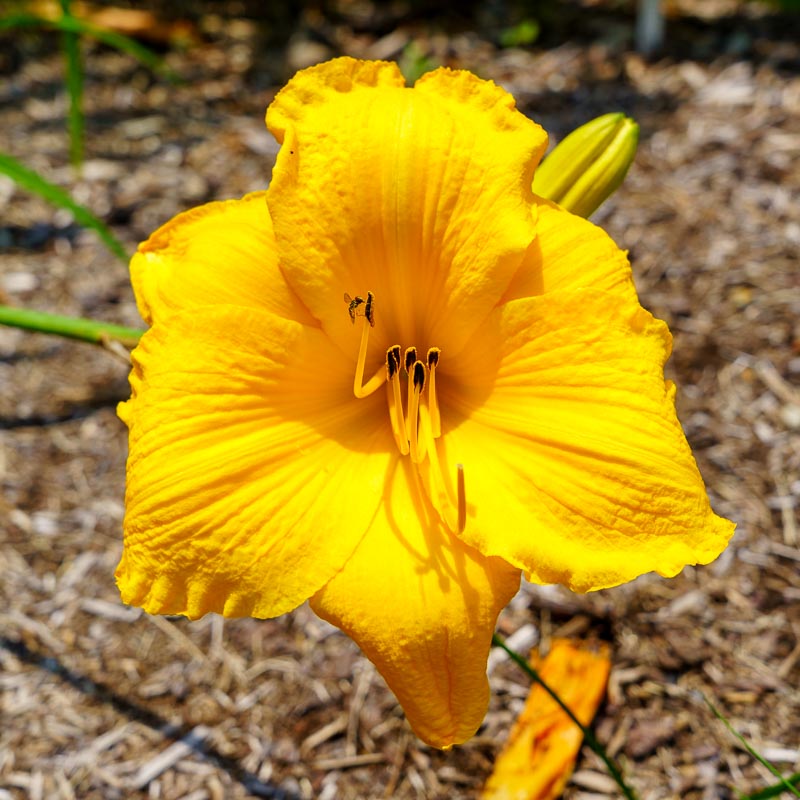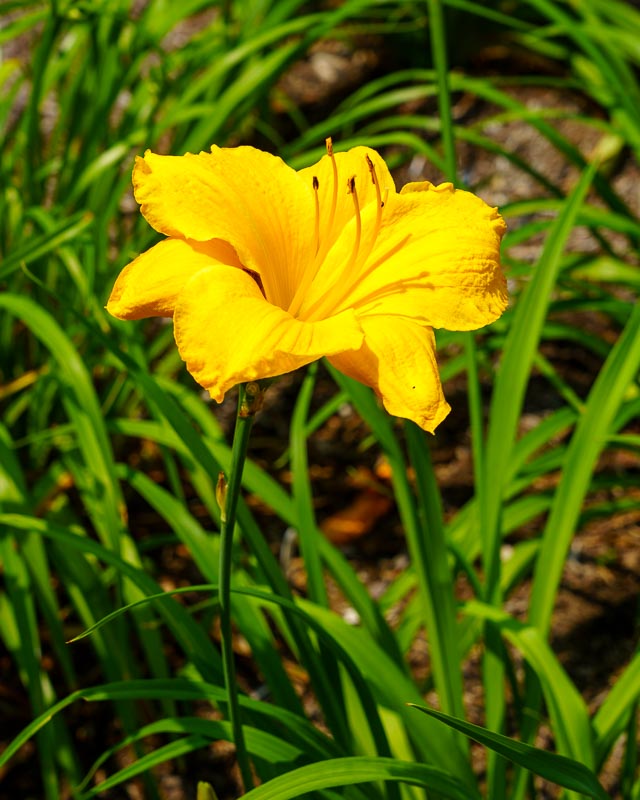Yellow Daylily
| Attribute | Value |
|---|---|
| Common Name | Yellow Daylily |
| Botanical Name | Hemerocallis lilioasphodelus |
| Mature Size | 24" - 36” tall; 24" - 36” wide |
| Sun Exposure | Full Sun, Partial Sun |
| Soil Type | Chalk, clay, loam |
| Soil pH | Acid, Alkaline, Neutral |
| Bloom Time | Late spring to early summer |
| Flower Color | Yellow |
| Care | Daylily clumps can grow anywhere from six inches to five feet tall. As they can reach a span between two to four feet wide, space bare roots about three feet apart (or for a more dramatic show in the early years, space about 18 inches apart). Plant roots either in early spring or in early fall one month or more before a hard frost. In northern gardens, it's best to plant in the spring to ensure good root development during the summer before harsh winters arrive. |
| Soil | Deep fertile medium loamy soil (tolerates light sandy or heavy clay) |
| Water | Water regularly in the first growing season. Moving forward, only water if the weather is very dry. Mulch helps retain moisture in the soil, plus it protects the plants in colder winter climates. |
| Temperature and Humidity | This is a tough plant that can stand up to most temperatures and a wide range of humidity levels. It would prefer about one inch of moisture per week, but it can also make its way through some dry periods relatively unscathed. |
| Fertilizer | Most daylilies do not need fertilizer. Instead, add compost each season to provide added nutrients to the plants and amend the soil. |
| Pruning | Unless you're looking to propagate them, avoid letting daylilies go to seed. As with many plants, seed production distracts the plant's energy from flower production. Remove any seed capsules whenever you see them and cut each scape to the ground. Remove any yellowing leaves throughout the growing season. Doing so will encourage the plant to produce new leaves. If desired, remove spent blooms, too, by gently twisting the wilted bloom between your finger and thumb. |
| Overwintering | Daylilies pretty much take care of themselves in the winter. Dormant varieties generally lose all foliage after the first frost. If they don't, feel free to cut them back to just a few inches above the ground, or you can wait until spring at which time you can pull dead stems easily away from the crown. Adding a layer of straw or leaf mulch before winter temperatures really drop can help the plant withstand excessive freezing and thawing. |
| Source | https://www.thespruce.com/how-to-grow-and-care-for-daylilies-5075400 |

